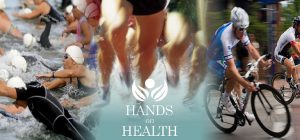 After years of participating in athletics such as dance and having worked with athletes of all levels, from “weekend warriors” to Olympic hopefuls, I have learned that sports massage therapy can be key to maximizing an athlete’s potential and reducing the risk of injury. While massage therapy is helpful during all stages of training and competition, it is important for both the athlete and the therapist to know which techniques and goals are most appropriate for each stage to achieve the desired results. There are several stages of training and competition and each has its own distinctive considerations, treatment options and treatment goals. As sports massage therapist, we cater our treatments to the needs required in each of these stages:
After years of participating in athletics such as dance and having worked with athletes of all levels, from “weekend warriors” to Olympic hopefuls, I have learned that sports massage therapy can be key to maximizing an athlete’s potential and reducing the risk of injury. While massage therapy is helpful during all stages of training and competition, it is important for both the athlete and the therapist to know which techniques and goals are most appropriate for each stage to achieve the desired results. There are several stages of training and competition and each has its own distinctive considerations, treatment options and treatment goals. As sports massage therapist, we cater our treatments to the needs required in each of these stages:
During the Intensity Training Stage the athlete’s focus is the same as the base training stage, however, the frequency and intensity of workouts increase. This is also the stage where those athletes involved in team sports begin training together. Massage treatment options during this stage are similar to the base stage, again with the frequency and intensity of treatment increasing. Treatment goals are the same as well with an emphasis being placed on addressing any problems areas. This stage usually begins about 2 months prior to an event or start of the season.
The Freshening and Tapering Training Stage arrives 1 week prior to a competitive event or start of the season. The athlete is now ramping down the intensity and frequency of their training sessions that allows for more rest and recovery. Massage becomes more general, with some light injury care depending on the approval of the athlete’s sports medicine team. Treatment goals should be focused on rapid recovery for restoration and reducing the impact that fatigue can have on injury risk and diminished competitive capacity.
During the Active Stage the athlete is either approaching an event or in the midst of their season. Their focus should now be on the actual event or competition and getting plenty of rest in between. Massage treatment options for this stage include a variety of pre-event and full body maintenance techniques designed to flush the soft tissues and stimulate muscle tone to prepare for intense competition. Treatment goals should be focused on addressing any restrictions in range of motion and rapid recovery from the event itself. This stage begins the week of the event and runs the course of the season.
Who Benefits?
In addition to the competitive professional athlete, all types of people can benefit from sessions designed around the 5 stages of training. Consider the ½ marathon runner, 5K athlete, children and teens, and your team will benefit from consistent and improved performance. Lastly, don’t discount the computer athlete who is required to spend long hours at the desk in order to meet a deadline such as the fatigue and muscle strain when an corporate accounting team must sprint to make a corporate tax deadline.

Jean Rowe, NC LMBT #8356
About The Author
Over the 14 years I’ve been a Massage Therapist, I’ve had the great pleasure of working with professional baseball players, college basketball and football players, track and field athletes, Olympic hopefuls in swimming, as well as marathon runners, triathlon athletes and people that just want to stay fit. Helping with injury prevention, rehabilitation and maintaining optimal performance is what I’m passionate about.

